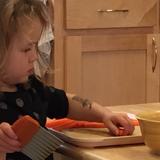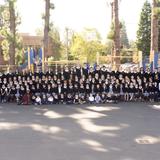For the 2025-26 school year, there are 3 private preschools serving 320 students in Santa Cruz, CA.
The top ranked private preschool in Santa Cruz, CA is Holy Cross School.
33% of private preschools in Santa Cruz, CA are religiously affiliated (most commonly Catholic).
Top Ranked Santa Cruz Private Preschools (2025-26)
School
Location
Quick Facts
150 Emmet
Santa Cruz, CA 95060
(831) 423-5852
Santa Cruz, CA 95060
(831) 423-5852
Gr: PK-8 | 159 students Avg. class size: 20 students Sports: 4 | Extracurrculars: 4 Tuition listed
Midtown Montessori![Midtown Montessori Photo - Cooking and eating are part of the daily curriculum. Midtown Montessori Photo - Cooking and eating are part of the daily curriculum.]()

Montessori School
987 Bostwick Lane
Santa Cruz, CA 95062
(831) 423-2273
Santa Cruz, CA 95062
(831) 423-2273
Gr: PK-K | 25 students
Santa Cruz Waldorf School![Santa Cruz Waldorf School Photo Santa Cruz Waldorf School Photo]()

Waldorf School
2190 Empire Grade
Santa Cruz, CA 95060
(831) 425-0519
Santa Cruz, CA 95060
(831) 425-0519
Gr: PK-8 | 136 students Avg. class size: 14 students Extracurrculars: 3 Tuition listed
Santa Cruz, California Private Schools (Closed)
School
Location
Quick Facts
2727 Mattison Ln
Santa Cruz, CA 95065
(831) 476-4000
Santa Cruz, CA 95065
(831) 476-4000
Gr: PK-8 | 217 students Avg. class size: 25 students Tuition & acceptance rate listed
Frequently Asked Questions
What are the top ranked private preschools in Santa Cruz, CA?
The top ranked private preschools in Santa Cruz, CA is Holy Cross School.
How many private preschools are located in Santa Cruz?
3 private preschools are located in Santa Cruz.
What percentage of private preschools are religiously affiliated in Santa Cruz?
33% of private preschools in Santa Cruz are religiously affiliated (most commonly Catholic).
Recent Articles

Paying for Private School: 2025 Family Guide
A 2025 guide to paying for private school, including tuition trends, financial aid, scholarships, and smart budgeting strategies.

Student Success Predictors at Community Colleges
A practical guide to student success predictors at community colleges for private school advisors helping graduates navigate two-year pathways.

Navigating the FAFSA & Financial Aid Timeline for Community College
Learn how to navigate FAFSA and financial aid timelines when starting at community college — from application to disbursement in 2025.




